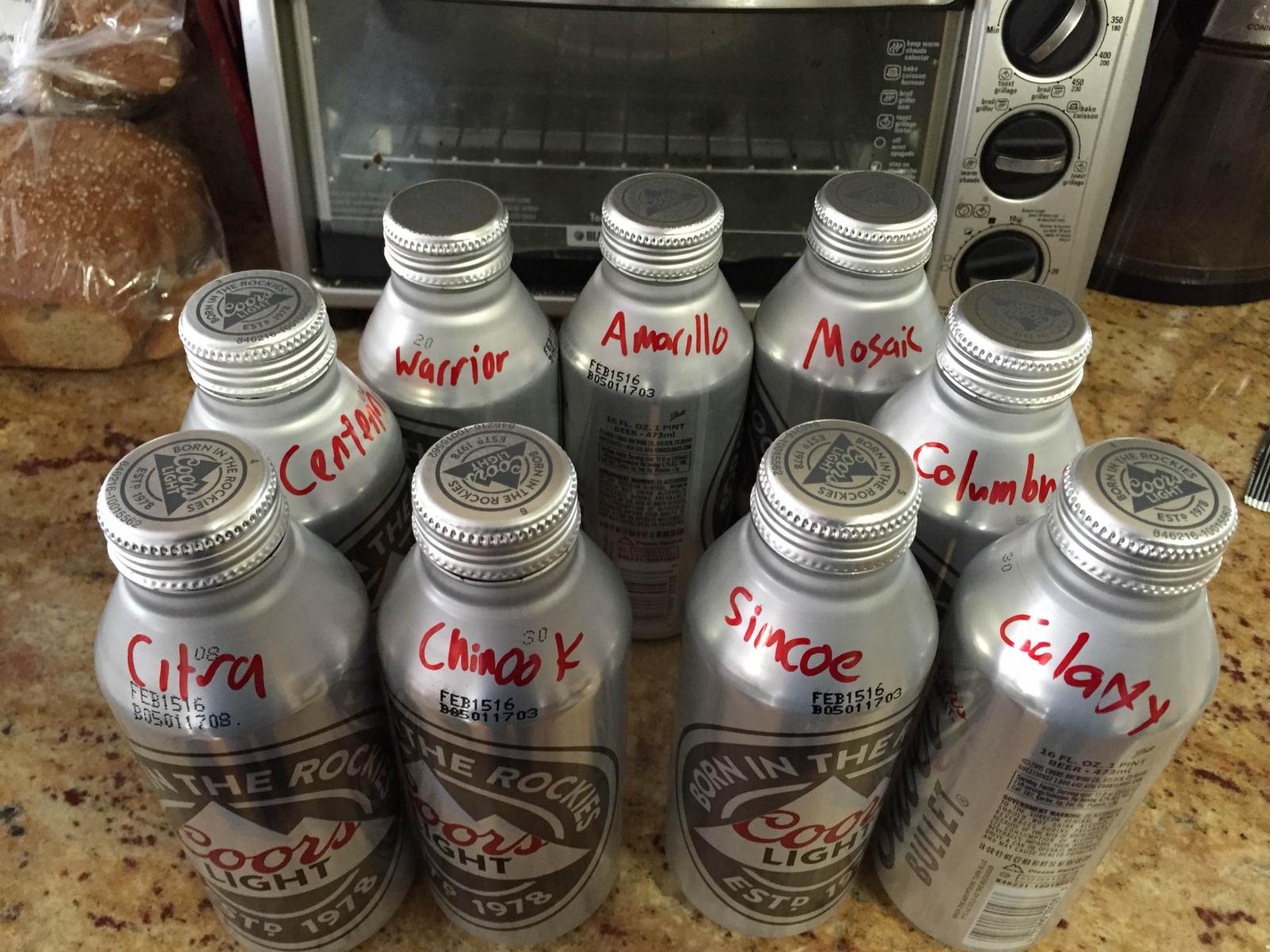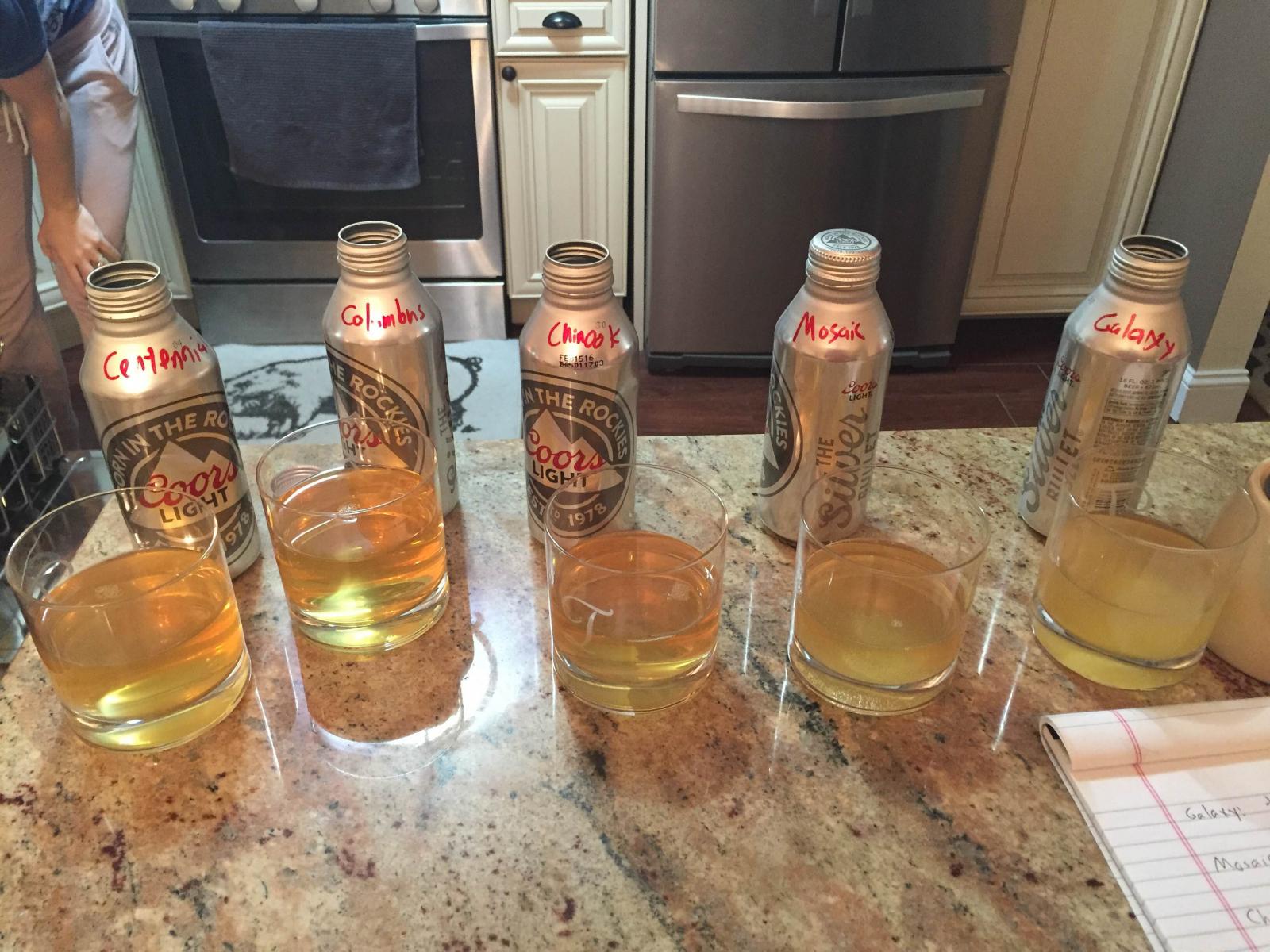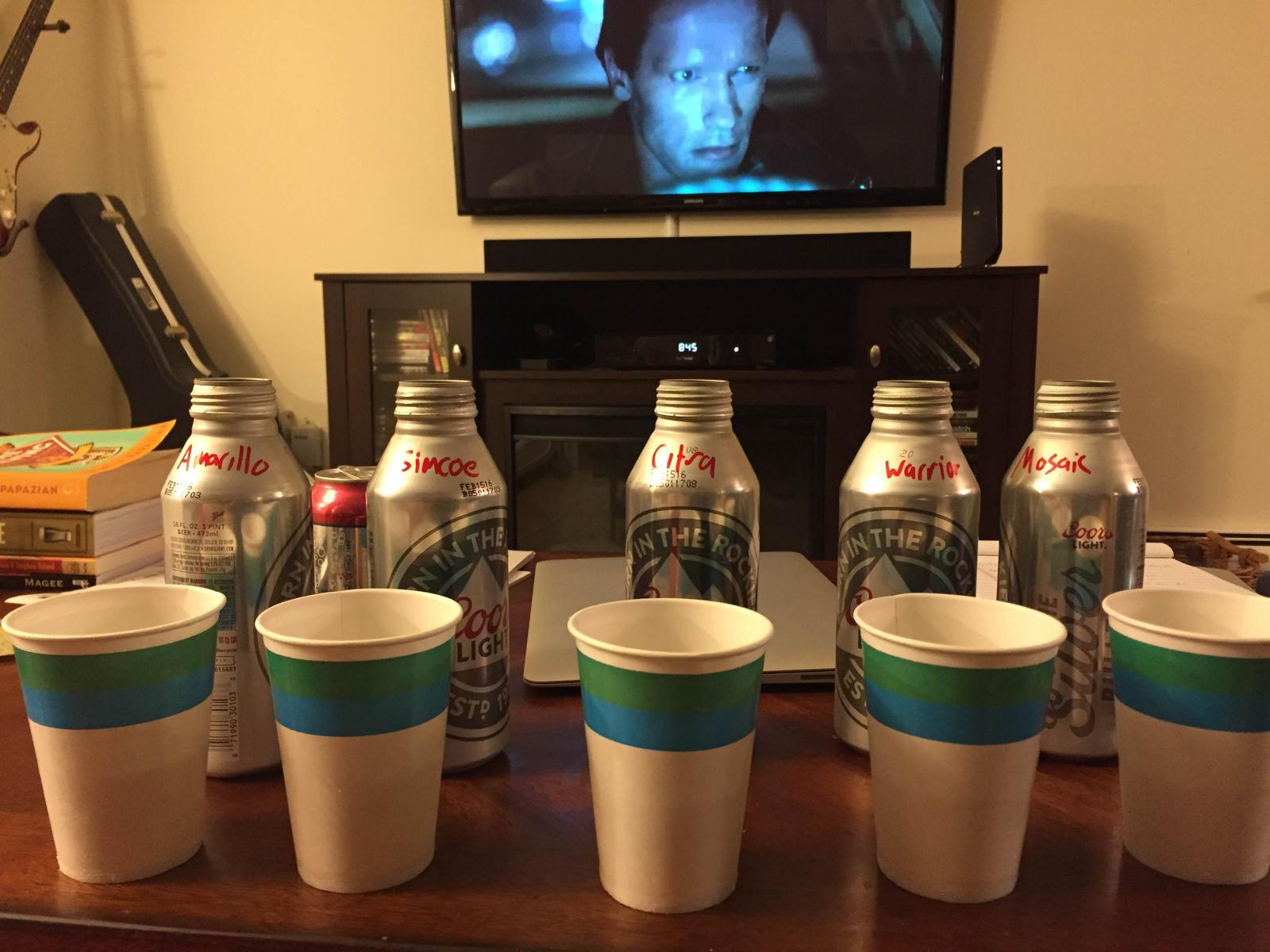tempestam83
Well-Known Member
Saw something on a here a while back about taste testing hops so I thought I'd give it a try.
Drop around 6 pellets into each bottle and sealed back up tight.
Going to let them sit for a few days and try them.
Looking forward to trying to taste the difference between all these hops.

Drop around 6 pellets into each bottle and sealed back up tight.
Going to let them sit for a few days and try them.
Looking forward to trying to taste the difference between all these hops.

















![Craft A Brew - Safale S-04 Dry Yeast - Fermentis - English Ale Dry Yeast - For English and American Ales and Hard Apple Ciders - Ingredients for Home Brewing - Beer Making Supplies - [1 Pack]](https://m.media-amazon.com/images/I/41fVGNh6JfL._SL500_.jpg)









































